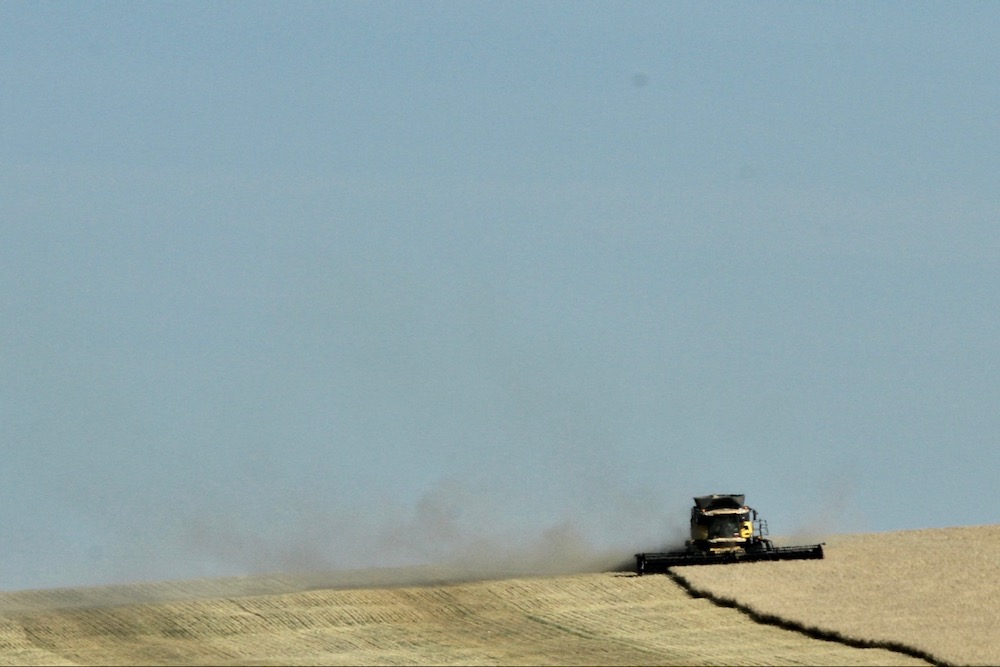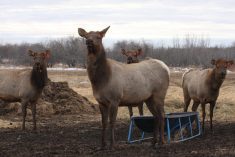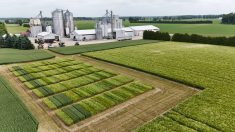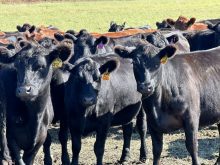Alberta’s cereal crop production wasn’t terrible this year, but only if judging by provincial averages.
Alberta Financial Services Corporation publishes the provincial crop report along with field staff at Alberta Agriculture and Irrigation.
As harvest unfolds, they’ve seen total yield estimates rise week by week. In its most recent edition, barley yield expectations increased by 2.4 bushels an acre and spring wheat and oat yields both rose by 2.2 bushels an acre.
From a provincial perspective, yields for all the major crops (AFSC doesn’t separate grains from its averages in its reports) look OK, said Jesse Cole, manager of insurance products and product innovation with AFSC.
Read Also

Canola’s clubroot success story
At one time, scientists, agronomists and growers were extremely worried clubroot would spread across the Prairies and devastate Canada’s canola industry.
“Alberta-wide it looks like we’re 91 per cent of a five-year yield index and 89 per cent of a 10-year index.”
The picture isn’t so rosy when focusing region by region, he said. The dryland south in particular suffered from low bushels per acre in grain crops.
“You would think, well, we’re not having a terrible year, but I think it’s worse maybe than it looks because it’s concentrated in some areas.”
READ MORE: Few surprises in StatCan report, analyst says
Low yields in the south reflect how the season began, said Cole. However, other regions made stunning comebacks.
“A lot of the province seeded into really dry conditions, like one in 50-year soil moisture deficits,” said Cole. “So it got off to a pretty slow start and then some central areas like west central, northern Alberta and the Peace got good rainfall, even to the point where Edson got evacuated for flooding.
“So we were kind of worried early on that that would affect crops in those areas, but it kind of tapered off a little bit. So we have some pretty good recoveries in those areas, but it’s a year that’s going to highlight how important that spring moisture is.”
Dryland yield estimates for spring wheat average 40.8 bushels per acre, comprising 25 bu./acre in the south region, 39.6 in central, 46 in northeast, 54.8 in northwest and 45.2 in the Peace.
“With spring wheat, we’ve got 40.8 bushels province wide, which I would call low-ish but not bad,” said Cole.
The average barley yield on dryland was 59.9 bu./acre. This included 32.1 in the south, 68.9 central, 78.5 northeast, 83.7 northwest and 52.4 in the Peace country.
Oats had an average estimated dryland yield of 79.7 bu./acre, including 31.8 in the south, 64 central, 91 northeast, 99.2 northwest and 61.2 in the Peace.
As for quality estimates, 62 per cent of hard red spring wheat is expected to grade No. 1, a one per cent increase from the last estimate. The durum crop is estimated to be 54 per cent No. 1, a two per cent increase since last reported.
Some 29 per cent of barley is expected to be malt quality, a six per cent increase. Oat quality expectations decreased by four percentage points, with 37 per cent of the crop expected to be graded No. 1.
How quality will pan out at the end of the season is anyone’s guess, said Cole.
“We’re kind of expecting higher protein and in some of those dry areas, it’s kind of normal to have higher protein in a dry year,” he said.
“On the quality side, I’m always surprised at how good stuff is in a dry year and how bad it is in a wet year, but I would expect to see kind of like what we had in 2021, where we got fairly high quality grain in some cases, but not a high volume.”
However, that would require more moisture, said Cole.
“That would depend on maybe having a little bit of moisture to fill the heads out. Those kernels have to become plump and the right size to make good grades as well.”
Across the province, all regions reported favourable weather conditions that allowed harvest to progress. Harvest of major crops is reported as 65 per cent completed, 21 per cent more advanced than in the last report.
As of Sept. 19, an average 79.2 per cent of spring wheat had been combined. This includes 93.8 per cent in the south region, 79.7 per cent central, 74.2 per cent northeast, 53.7 per cent northwest and 83.4 per cent in the Peace.
For durum, an average 95.3 per cent had been combined; 94.5 per cent in the south region and 100 per cent central. Figures for the northeast, northwest and the Peace were not available.
In barley, 82.3 per cent had been harvested, comprising 95.1 per cent in the south, 82.7 per cent central, 74.9 per cent northeast, 62.5 per cent northwest and 67 per cent in the Peace country.
An average of 57.4 per cent of oats had been harvested by Sept. 19. This includes 96.8 per cent in the south, 60.5 per cent central, 64.1 per cent northeast, 35 per cent northwest and 67 per cent in the Peace.
Back east
The theme for wheat harvest in the eastern Prairies was also “variable,” and not just when experts talked about the big picture in their respective provinces.
Both Sask Wheat chair Brett Halstead and Andrew Hector, cereal agronomist with the Manitoba Crop Alliance, noted wild swings even within the same growing region.
“I’ve heard first- and second-hand about crops from a write off — under five bushels per the acre — as far as spring wheat goes, all the way up to 90 bushels to the acre,” Halstead said.
The culprit behind the variability was 2023’s precipitation patterns. Widespread, soaking rain was a rarity through the growing season, with most moisture coming from patchy thunderstorms.
That was great for those lucky enough to be in the storm path, and assuming those storms didn’t also come with damaging hail.
Manitoba Agricultural Services Corporation has reported one of its worst hail claim seasons in years, with 1,830 claims as of Aug. 28. The corporation’s five-year average is 1,280 claims per year.
Halstead said, in general, wheat was “probably a little better than we expected. I attribute some of that to the work organizations like Sask Wheat, as well as the Manitoba Crop Alliance and Alberta Wheat, do in variety development, in conjunction with our universities and Ag Canada.
“We’ve got some really good new wheat varieties that have come out in the last number of years.”
Better agronomic practices have also played a role, he said.
Halstead hasn’t heard much about quality. There is some bleaching in his area, he noted, although he hasn’t heard of widespread problems at the elevator. That wheat is still being graded No. 1 with good protein, he said.
“That’s probably going to vary by area. I haven’t heard as much about quality as I have about yield.”
Producers in drought-hit areas may have used programs meant to shift poor crops into the feed stream, he noted, although he hasn’t seen that locally. Manitoba saw a similar program during the 2021 drought. — With files from Alexis Stockford
















